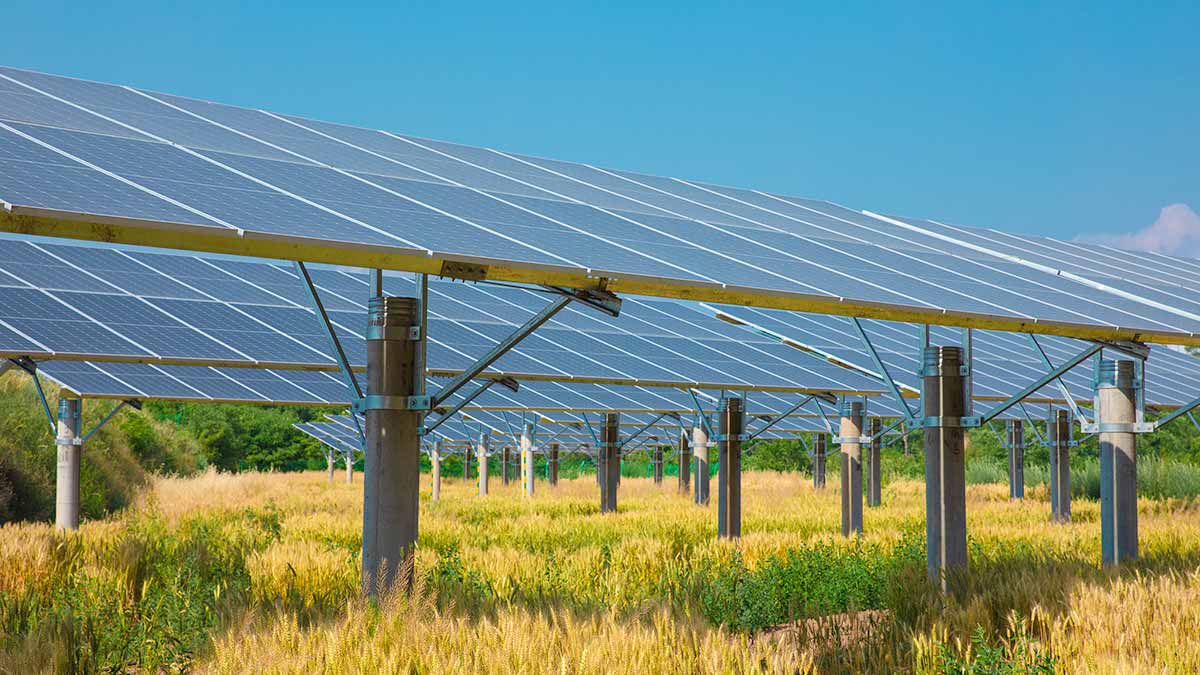Plunging costs of solar and battery technologies could underpin China’s pivot away from coal, with new research showing that by 2060 almost half of China’s electricity needs could be supplied by super cheap solar power, helping the world’s largest emitter achieve its decarbonisation goals.
New research, published in the Proceedings of the National Academy of Sciences, estimated that by 2060 more than 43 per cent of China’s electricity could be supplied by solar projects.
Critically, the researchers predicted that these solar supplies could be provided at a price below US 2.5 cents per kilowatt-hour – even after energy storage is accounted for – significantly undercutting China’s existing supplies of coal power.
The analysis, undertaken by researchers at Harvard University’s School of Engineering and Applied Sciences and Tsinghua University in Beijing, said that previous assessments of China’s future electricity system had underestimated the potential cost reductions for solar energy and battery storage technologies.
“The results of the study suggest that solar plus storage could serve as a cost-competitive and grid-compatible source for a carbon neutrality power system in China,” the research paper says.
“The decline in costs for solar power and storage systems offers an opportunity for solar-plus-storage systems to serve as a cost-competitive source for the future energy system in China.”
Such cheap supplies of solar energy would likely see coal pushed out as China’s primary source of electricity, with the cost of coal-fired generation currently within the range of US 3.6 to 6.5 cents per kilowatt-hour.
The findings coincide with a worsening energy crisis in China, as coal prices rose to a record on Monday, fanned by growing concerns that domestic coal output may be unable to meet surging electric generation demand.
Ironically, the coal power crunch has had a major impact on China’s solar industry, with PV manufacturers ordered constrain their output. Such has been the impact on overall supply that a handful of the world’s largest solar companies last week published an open letter calling on customers to delay purchases and slow installations.
And while this has caused the wholesale cost of solar panels to rise in some markets – including Australia – this will be a temporary blip on an otherwise steady downward trajectory.
“The findings highlight a crucial energy transition point, not only for China but for other countries, at which combined solar power and storage systems become a cheaper alternative to coal-fired electricity and a more grid-compatible option,” Gilbert Butler Professor of Environmental Studies at the Harvard, Michael B. McElroy said.
The researchers found that the significant cost advantages of solar energy technologies in the Chinese electricity market would allow for a vast amount of energy storage capacity to be added to the system to support the high solar penetration, while remaining cost competitive.
At 43.2 per cent solar penetration, the researchers found supplies of solar electricity would remain cheaper than coal generation even after accounting for up to 7.2 petawatt-hours of energy storage capacity that would need to be built to maintain reliable supplies.
“Today, subsidy-free solar power has become cheaper than coal power in most parts of China, and this cost-competitive advantage will soon expand to the whole country due to technology advances and cost declines,” Tsinghua University’s Xi Lu said.
“Our results demonstrate that the economic competitiveness of solar power combined with investments in storage systems could provide extra benefits for grid dispatch, which will be especially important for the operation of future electric systems in China.”
The research was based on a bottom-up assessment of China’s potential solar energy capacity, including an analysis of China’s available land and solar resource availability, weather patterns, as well as projected future technology costs.
The researchers found there was virtually no limit to the amount of solar capacity that could be built within China, with a theoretical maximum capacity of 99.2 petawatt-hours – more than twice China’s energy consumption across all sources.
The researchers said that this immense potential provides China with a strong opportunity to decarbonise a large proportion of its energy use through electrification, shifting more of its energy use in industry, transport and construction onto the electricity system.
“Our research shows that if costs continue to decline, especially for storage, there could be opportunities to power vehicles, heat or cool buildings, or to produce industrial chemicals, all using solar energy. This would extend the climate and environmental benefits of solar energy far beyond the power sector as traditionally conceived,” Tsinghua University’s Shi Chen said.
China has seen surging demand for electricity as its economy continues to grow and the pace of industrial activity in the world’s second-largest economy – and largest greenhouse gas emitter – accelerates.
Most of China’s current demand for electricity has been met by coal fired generators, but a growing share has been supplied by renewable energy sources.
The research comes as the Morrison government debates its own climate policies, grabbing with how to respond to mounting pressure to adopt a net zero emissions target for 2050, with a desire amongst some within the coalition government to protect Australia’s fossil fuel industries.
China is the second-largest buyer of Australian coal, but last year announced a commitment to achieving net zero emissions by 2060, and will begin cutting its coal consumption from 2026.










